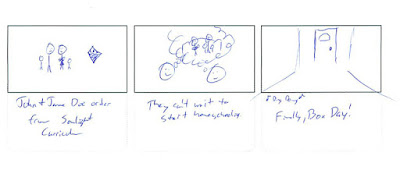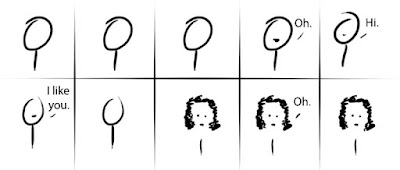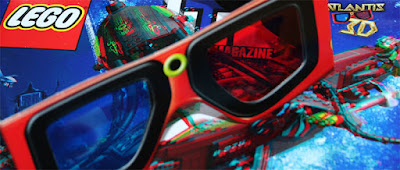A film professor once said to his class, "It's a little odd that people still use scripts. Here is a purely text medium trying to convey what will ultimately become a visual media."
I discovered this firsthand when I sat down to edit my senior project. I had shown my script to several people and they all loved it. My professor said it was an excellent script. I was super excited about the project.
I quickly finished my first cut of the film and watched it.
The playhead got the end of the timeline. I blinked. Then I said, "I wrote this thing and I don't understand it!" With good reason.
Two good reasons, actually:
1. In the context of prose you can get the feeling from a scene. In the context of a movie a scene doesn't really give you a feeling. It's just something you see. And if seeing that does not give you that feeling, the feeling is lost.
Let me give you some examples from
Retexit. The following are images from my senior project and the description from the script:
 The alarm is going off: 8:42.
The alarm is going off: 8:42.
...So what? My audience member has no way of knowing that 8:42 is significant... and making them stare at that frame isn't going to help them figure it out.
 The shower runs.
The shower runs.
Again... so? This scene actually has no bearing on my movie whatsoever. I put it in because, as a student filmmaker, I felt it was the best way to start the day in my movie. First an alarm clock and then a shower? Two tell-tale shots of student films. I hit both within the first few seconds of my movie. Great.
But those
faux pas are nothing compared to what is coming up. Again, remember: These are the exact words from my script and an accompanying frame:
 The bathroom door opens
The bathroom door opens to reveal a cluttered room. Magazines and posters, damaged from neglect, only reinforce the discrepancy between stardom and dirty dishes with half-eaten food going bad.
Great prose. But as a script this makes me want to gag. There are so many problems with this:
- Look at the image... does it say any of the grandiose things in the paragraph above? No. It's a messy room. That's it. First rule of script writing: Show, don't tell. Just because you can tell it with words does not mean that your image will show it. [e.g. How would you show "food going bad" or "reinforce the discrepancy" in an image?]
- The story is missing. I'm making a point, not telling a story. What does this have to do with my character's life? It's a nice artistic expression of a state of her universe, but it does nothing to move the tale forward. It's noise at best.
- This is pretentious, artsy blather. With the right audience and a framed still on a gallery wall I think people could agree with the phrase above as an artist statement. But it does not belong in a script.
But let's move on...

The hood on her car is open. The camera moves out of the internal workings to look down the road. No aid cometh.
...right. Because looking at the image above totally screams: You are alone and abandoned!
Show, don't tell.
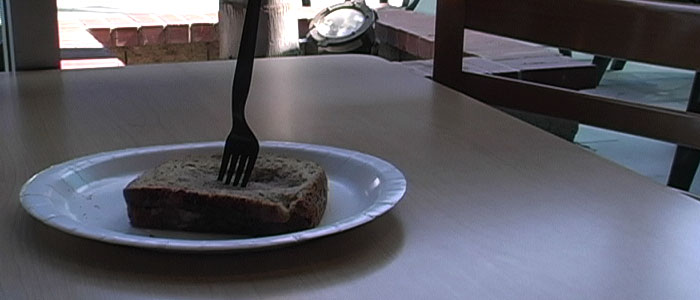
A soggy, half-eaten peanut butter and jelly sandwich sits on the table. A fork is driven into like a dagger.
Not only does the image not convey the message but the message is so vague it's impossible--even reading it--to figure out what I was trying to say.
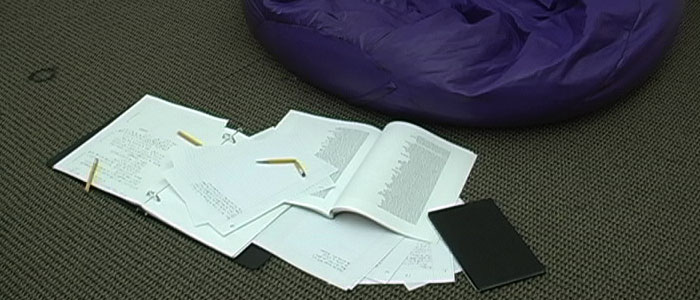
Papers with notes, doodles, and scribbles form a blanket on the ground. The sheer amount is overwhelming. A broken pencil lies in the middle of the mess.
I don't get that vibe from the image. Do you? No.
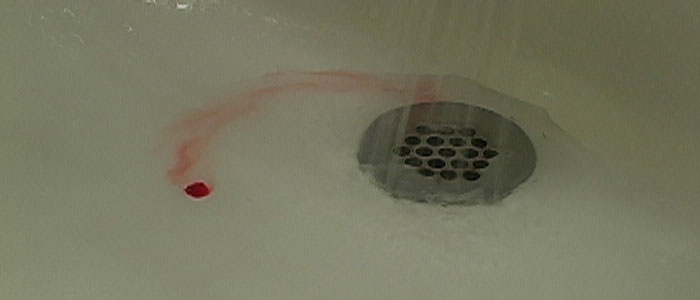
The drip of a faucet. A drop of blood refused to be carried down the drain by the water.
Did she cut herself shaving? Did she have a bloody nose? Did her nail polish drip? And why didn't she wipe it up?
No clue.
After that experience I created a new rule for myself: Describe only what you see. If that does not communicate then you need to come up with something else. So, the first two examples fit with the first half of this rule. But they utterly fail the second half of the rule: They are accurate descriptions but say nothing to the audience.
The last five examples fail both aspects of my script rule completely.
This isn't fool-proof, but it's a good rule to follow if you don't want your script to be lost in translation from text to visual expression: Describe only what you see. If that does not communicate then you need to come up with something else.
~Luke Holzmann
Your Media Production Mentor



